Such building material as siding entered the market, in fact, not so long ago, but has already gained wide popularity. Recently, it has been increasingly used not only for the exterior decoration of industrial and office premises, but also for the decoration of residential buildings and, in particular, for the exterior decoration of window openings.
What are the advantages of this material over others? Is this material so good that it can be used to decorate residential buildings from the outside, and also how feasible is it to decorate window openings with your own hands?
The benefits of siding
It is practically versatile, non-toxic and non-flammable material. It is lightweight, does not corrode, does not lose shape and does not crack in the cold. Over time, it does not lose color and does not require painting. The modern construction market offers siding in a wide range of colors. If you want to decorate window openings with siding, this is an additional plus, since it is possible to create an eye-pleasing contrast between the general color of the walls and the color of the window slopes.
The modern industry produces several types of siding, each of which has its own application.
The lightest, cheapest and most popular is plastic siding. It is most widely used in low-rise construction, especially in the construction of private houses. The easiest way to "update" and insulate old buildings today is also with the help of siding. Firstly, it is easy to hide the sheets of insulation under the siding, and secondly, the old house will really take on the appearance of a new and well-groomed one.
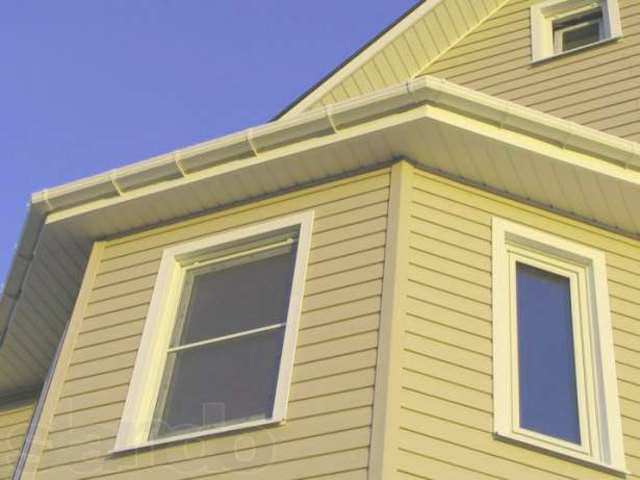
In addition, plastic siding is a very plastic material and with its help you can arrange not only straight, but also rounded walls and even arched window openings.
Plastic is not at all attractive material for insects and rodents. It does not conduct electricity and does not support combustion. Special care of the siding is also not required. Dust and dirt on its surface hardly accumulate, and it is enough to periodically simply wash the walls with a watering hose.
Metal siding
This type of siding is made of steel by rolling. Its main area of application is industrial facilities. While maintaining all the advantages of PVC siding, metal is much more durable and resistant to mechanical damage. It is non-flammable and therefore ideal for the arrangement of gas stations and car washes.
Wood siding
The basis of this material is wood fibers with the addition of special resins. It is beautiful, but currently it is significantly inferior in popularity to PVC. The thing is that wooden siding is a rather expensive material, and the service life is short. At least, it is not suitable for facing rooms outside or decorating window openings from the street side.

Aluminum siding
This material has a wide range of applications. It is lighter than metal and at the same time less susceptible to corrosion.
Cement siding
Manufactured using cellulose fibers and cement. This material is good for renovating old building facades and leveling walls; it is not flammable and is not afraid of mold or mildew. However, it is difficult to handle, heavy and expensive. It is impractical and inconvenient to use it for finishing window slopes.
The name of this material speaks for itself. The best use for it is the cladding of the basement of buildings, which is most susceptible to atmospheric influences.
The easiest and most profitable way to finish window slopes with vinyl siding, which is the easiest to handle and maintain, has a wide color palette and is relatively inexpensive. If desired, metal siding can also be used for this purpose, but steel panels are heavier, more expensive and more difficult to process.
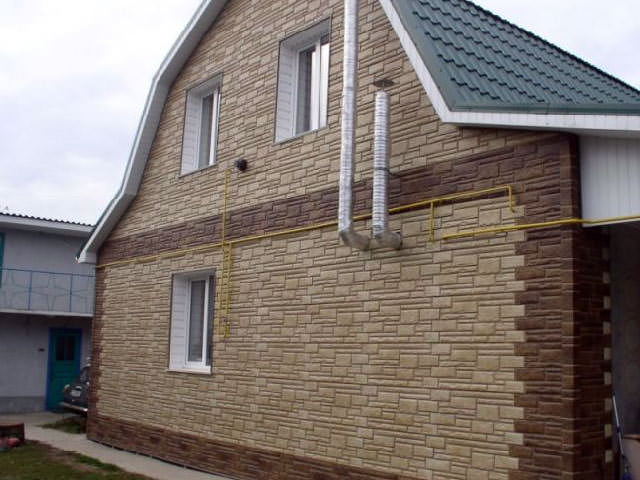
Material calculation
When the final choice of material is made, it is necessary to make calculations of how much siding is actually required to finish all the windows, and at the same time the doorways. After all, in order for the house to have a complete look, the finishing of the slopes of windows and doors must be done in the same style.
For the calculation, it is necessary to accurately measure the perimeter of all window openings. Only the distance under the windows should not be taken into account. In these places, not siding strips will be mounted, but window sills and ebbs. The front door is measured according to the same principle. Experts advise to add about 10% more to the figure obtained in this way as a margin for pruning.
In addition to the siding itself, the quality of finishing window openings largely depends on the quality of the fasteners. Not only the beauty of the cladding, but also its strength depends on how high-quality materials will be used in the work. Therefore, experts recommend purchasing original fasteners in advance, designed specifically for the selected type of finishing material. Otherwise, you cannot count on the durability of the finish.
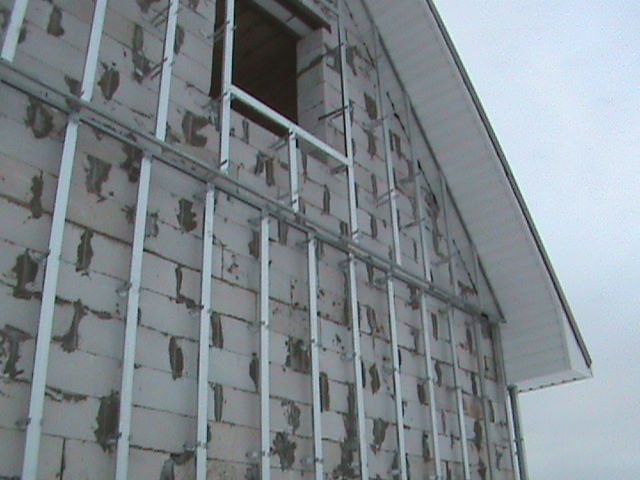
Regardless of whether you invited professionals to carry out the work or decided that finishing is quite feasible with your own hands, for high-quality siding of window openings you will need special accessories and fasteners:
- H-profile or connecting strips (hide the seams between panels, and are also used when increasing the length or transitions from one color to another);
- J-profile or wind bar (designed for finishing eaves of roofs, but in fact, almost a universal element that, in skilled hands, can easily replace window strips and some other elements);
- starting and finishing bars;
- external and internal corners for decorating panel joints;
- window slats;
- chamfers;
- ebb.
If the window decoration will be done by hand, you should take care of the presence of a metal square in order to be able to mark the angles of installation of the material on the slopes.
In addition, you will need:
- medium sized hammer;
- two hacksaws with small teeth (one for metal, the other for plastic);
- tape measure and twine or thick twine for marking;
- building pencil or a piece of chalk;

- screwdriver;
- building level.
The color of the fasteners must match the color of the cladding panels. In other cases, if this is provided for by the design of the building, you can choose fasteners in a contrasting color or shade.
Professionals recommend using a standard metal profile for attaching siding around window openings. Nevertheless, in order to save money, it is possible to use wooden beams for these purposes. You just need to remember that wood is very susceptible to moisture and if we take a wooden bar for fastening, then ideally dried, and also treated with a special water-repellent impregnation.
Most often, the windows are located relative to the walls in the following ways:
- the windows go deep into the walls at a distance of 5 to 19 cm;
- the window opening is flush with the wall, without slopes;
- the windows deepen by more than 19 cm.
In addition, arched or lancet windows are worthy of special attention.
For each type of arrangement of windows in the wall, the process of sheathing the slopes with siding will have its own nuances.
Before starting work, it is necessary to carefully check the condition of the slopes. Of course, if you have to finish the window openings in a new building, you can skip this procedure.
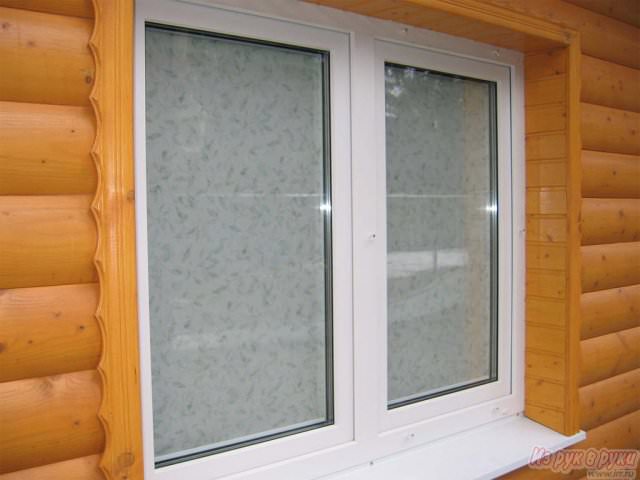
But in the case when we are talking about an old house, it is imperative to pay attention to whether there are cracks in the slopes. They can weaken the adhesion to the battens. Existing cracks must be putty, and after the putty dries, the surface repaired in this way must be carefully primed several times with a deep penetration primer.
If the windows are made in accordance with European building standards, then they go deeper into the walls by no more than 19 cm.In this case, window slats will also need standard sizes, up to 22 cm.To decorate window openings with siding, even with your own hands, will not be difficult.
To fasten the window sill strip at the frame, a finishing profile is used, into which the window sill strip is then inserted.
However, since the building codes in the CIS are different from European ones, the window openings of buildings are often much deeper than 19 cm. Especially when it comes to old buildings, the facades of which are supposed to be updated with siding.
In this case, corners are mounted along the perimeter of the window opening. A J-profile is attached near the frame, and external corners are attached to the perimeter of the window opening.

Then they prepare the siding panels, cutting them to the required size, and decorate the window slopes with them, inserting them into the grooves of the fixed fittings around the opening.
In fact, this option for the location of the windows is the most difficult to carry out the finishing of the slopes on their own. But even in this case, it is quite possible to finish the siding with your own hands and save on the invitation of specialists. It is more difficult to finish only the openings of arched and lancet windows.
The easiest way to arrange windows for decorating them with siding is flush with the outer surface of the wall. In this case, experts recommend purchasing a platband 62 mm wide. This will allow you to focus on window openings in the overall design of the facade.
First, the platband itself is mounted, and trim panels are already inserted into it.
You can also choose an inconspicuous option for finishing window openings. Then, instead of the casing for fastening around the windows, a universal J-profile is chosen.
This option for the arrangement of windows is the simplest in terms of the possibility of doing work with your own hands.
The most difficult for performing work on the design of external slopes is the option when the windows are in the shape of an arch.
![]()
For finishing such windows, siding manufacturers produce a special flexible J-profile, but instead of it, you can successfully use a regular one. Only along the perimeter of the arc it will have to be cut, exposing it along the rounded part of the opening.
At the same time, it is important to take into account the advice of professionals, who recommend making cuts on the profile every 20 cm in order to avoid cracking of the fittings.
On construction sites that the World Wide Web is rich in, you can find many practical tips on how to decorate window openings using siding. Many of these sites even contain detailed photo and video instructions on how to do it yourself and for different window arrangements. However, there are general rules, a kind of instruction, following which you can always get an excellent result and beautifully decorated windows with siding.
- You should not skimp on fasteners such as dowels and self-tapping screws. It is necessary that they be galvanized. Otherwise, over time, rust will begin to appear on them.
- Self-tapping screws should not be screwed into the material all the way. It is imperative to leave a gap of 1 mm for the expansion of the material.
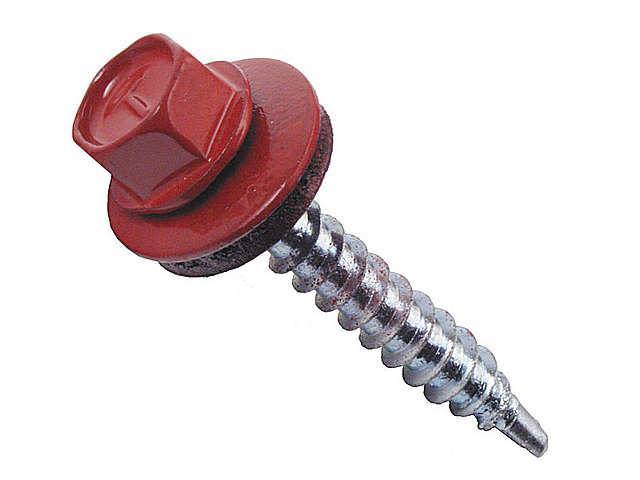
- It is necessary to screw in the self-tapping screws straight, and not at an angle.
- The self-tapping screws should be easy to screw right into the center of the panel mounting holes. Otherwise, the siding panel or fittings may crack, which will subsequently lead to their deformation.
- In the process of joining the elements of the fittings, the corners are cut by 45 degrees.
- If parts of the docked planks are adjacent to the slope, then at one plank the part adjacent to the slope is cut at an angle, and at the second plank this part is tucked. This makes it possible to achieve a tighter connection of the fittings and avoid cracks and gaps.
- Installing a terminal strip under the window will allow the panel to be secured more securely.
- Exterior decoration is exposed to rain, wind, frost and sun all year round. Therefore, when finishing slopes, special attention should always be paid to the tightness of the joining of all fasteners.
In a word, thanks to modern technologies and tools, decorating window openings with siding with your own hands is quite possible. The main thing is not to neglect the requirements of the installation instructions and adhere to the basic requirements.




